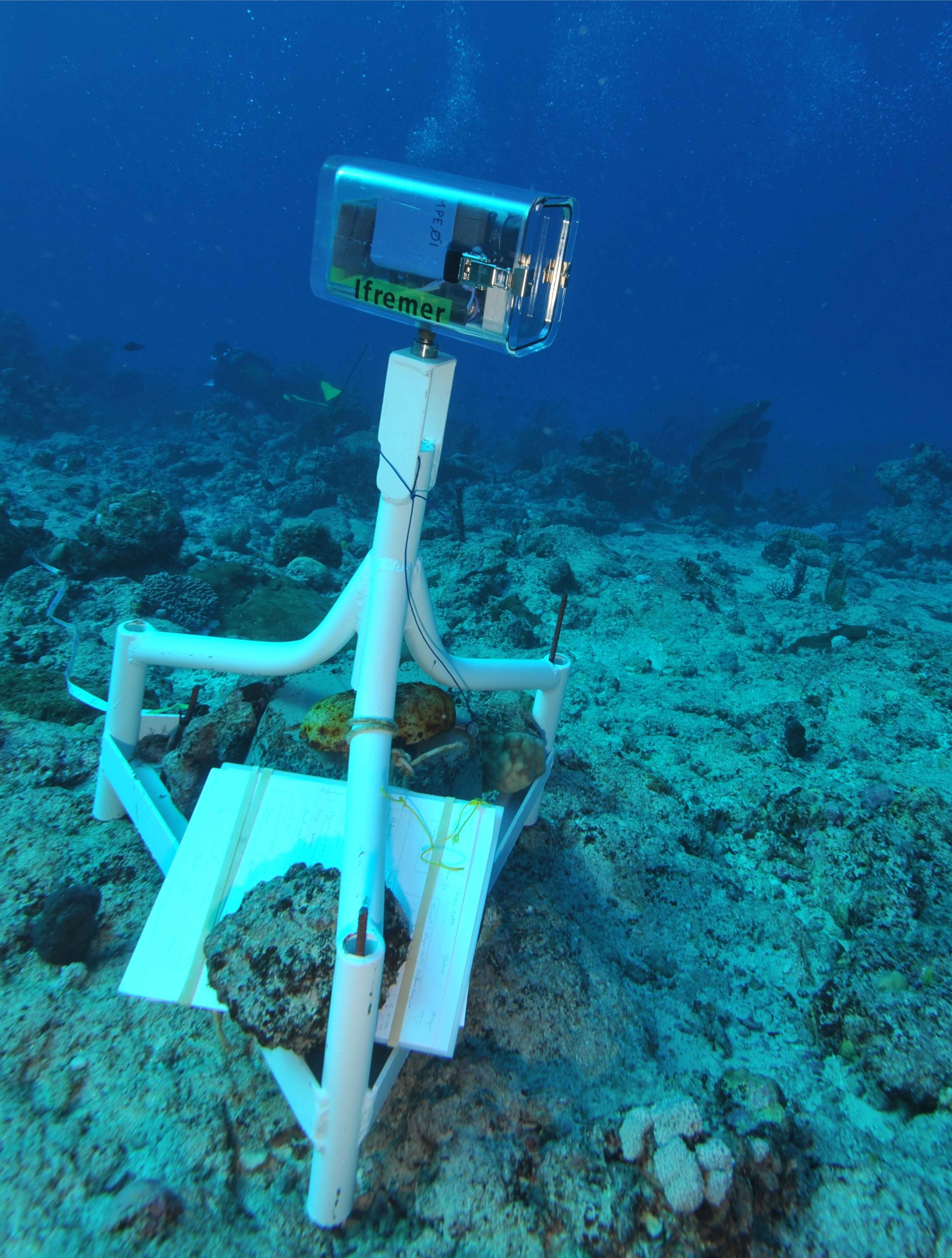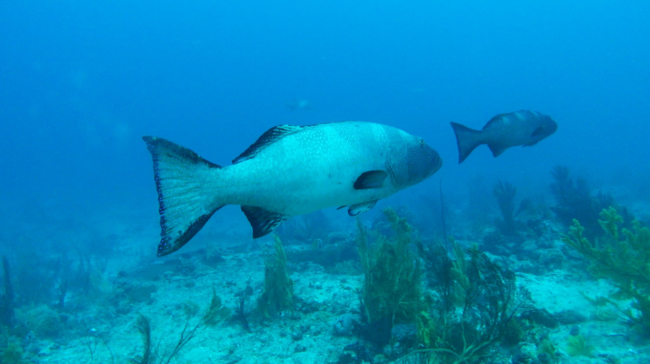25/02/2025 | When fish gather to spawn, it is potentially attractive for fishing. High catch rates can generally be expected during spawning times at specific locations. However, these sites are also very important for the conservation of the fish species that spawn there. With the help of remote underwater video cameras, an international team of scientists has analysed the spawning aggregation dynamics of the black-saddled coral grouper (Plectropomus laevis) in the South Pacific. The study, led by the French national institute for ocean science and technology (IFREMER) and with participation of the Leibniz Centre for Tropical Marine Research (ZMT), provides valuable information about the spawning aggregations and the courtship behaviour of the species and possible conservation measures. It is published in the ICES Journal of Marine Science.
The black-saddled coral grouper is a popular food fish. It is considered vulnerable to fishing, and population declines have been reported in some regions of the South Pacific. Researchers from IFREMER and ZMT wanted to find out more about the spawning aggregations of this previously understudied species, also with a view to making recommendations for their protection. Over a period of eleven months, the research team led by IFREMER Senior Researcher Dominique Pelletier deployed a number of cameras in a reef passage off New Caledonia in the South Pacific. The remote underwater systems were mounted at three stations in varying depths of water. The video recordings showed that the black-saddled coral groupers gather monthly to spawn between November and April. During the spawning season, the males displayed a pronounced mating colouration, and the fish abundance increased significantly during this period.
The study provides new information about the spawning aggregations of this species, their seasonal fluctuations and spatial distribution in the reef passage. It also helps to identify critical habitats and to better protect these. “The findings on the temporal and spatial dynamics of spawning aggregations can be used to develop targeted protection measures, such as seasonal fishing closures or marine protected areas,” says Annette Breckwoldt, Senior Scientist at ZMT and co-author of the study. This could contribute to the long-term conservation of fish stocks, which would in turn benefit fisheries, and thereby the local coastal communities, but also the reef ecosystem and associated lagoon areas.
The study also demonstrates the potential of remote underwater video for marine research and fisheries management. According to the authors, these cameras have several advantages compared to conventional monitoring methods. “Remote video cameras are less invasive than diver-operated surveys,” says first author Erwan Saulnier from IFREMER, who now works as a fisheries ecologist at the Fisheries Department of the Falkland Islands Government. “This technology is more cost-effective, can be used in various underwater conditions and enables detailed observations of fish behaviour.”

Over a period of eleven months, the research team deployed a number of cameras in a reef passage off New Caledonia in the South Pacific | Photo: M. Juncker, IFREMER
Publication:
Erwan Saulnier, Annette Breckwoldt, Marianne Robert, Dominique Pelletier, Remote underwater video for monitoring reef fish spawning aggregations, ICES Journal of Marine Science, Volume 82, Issue 1, January 2025, fsae194, https://doi.org/10.1093/icesjms/fsae194





